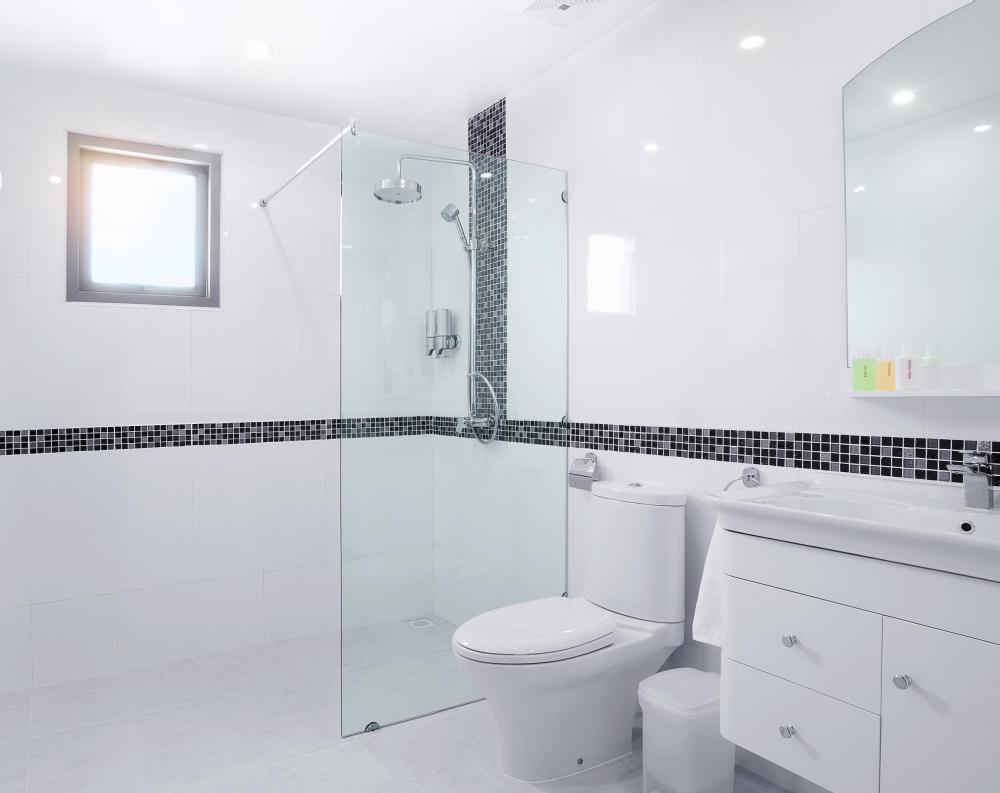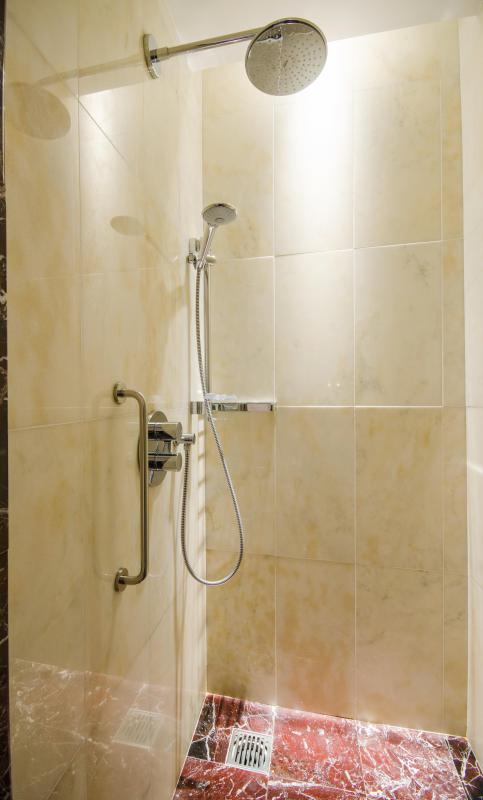At HomeQuestionsAnswered, we're committed to delivering accurate, trustworthy information. Our expert-authored content is rigorously fact-checked and sourced from credible authorities. Discover how we uphold the highest standards in providing you with reliable knowledge.
What is a Shower Enclosure?
The shower enclosure is a device that makes it possible to alter the function of a bathtub to allow the option of enjoying a tub bath or taking a shower. Shower enclosures can be created using relatively simple materials or be designed to require installation and sealing sections that completely box in the bathing area. Here are some examples of different designs for a shower enclosure.
One of the first types of shower enclosure created in decades past involved little more than some hardware, a little plumbing and the use of a shower curtain. This simple approach was an ideal way to add versatility to an old fashioned claw foot tub. By using piping and plumbing fixtures to run a riser pipe upward from the existing faucets and top the pipe with a shower head, it was possible to make it possible to continue enjoying a tub bath when desired, but also enjoy a shower from time to time.

To contain the water flowing from the shower head, a metal or wood ring conformed to the length and width of the tub would be suspended above the shower area. Adding curtain rings and a shower curtain that was long enough to dangle into the tub made it possible for this rudimentary shower enclosure to effectively keep the water in the tub and away from the surrounding floor.

Over time, bathtub design moved away from freestanding models and more toward tubs that were attached to the wall and floor in a recessed area of the bathroom. This led to the development of a shower enclosure that could would fit across the expanse of the open side of the tub. Constructed with a combination of a metal frame featuring tempered glass or in later years Plexiglas, the enclosure would be attached to the wall and ceiling. The body of the shower enclosure would feature sliding shower doors, making it possible to open the space when a tub bath was desired, but close them when the shower was in use.

Today, both of these types of shower enclosure designs are still in common use. In more recent years, lightweight tubs have been designed to include fittings for a tub enclosure makes it easy to mount glass doors across the open side or to suspend a shower rod to hold a shower curtain. Since tubs are sometimes designed to fit in a corner rather than with the traditional oblong design, tub enclosures have also been created that work well with these alternative bathtubs.

It is also possible to custom design a shower enclosure. This is often an attractive option when the home owner plans on installing a bathtub with unusual dimensions, or designs the bathroom to allow for a tub to float in the middle of the space. A customized shower enclosure of this type may allow for entry and exit from the tub from more than one direction, and may incorporate elements of the general architecture of the room in order to achieve a more unified appearance.
AS FEATURED ON:
AS FEATURED ON:














Discussion Comments
If your house is built on a concrete slab, then you don't have to be so worried about splashing kids. If the tub and shower is built on a wooden floor, splashing can lead to rot but that's not as much a problem if the unit is built on concrete.
That's not to say that splashing doesn't cause problems (mold and mildew, for example), but a concrete slab is a lot more resistant to water than wood is.
The shower attached to a built in tub is probably the most common shower enclosure in the United States. However, there is a problem with it. Quite often, shower curtains or doors will be used and the designers never considered making those so they could deflect water that hit them directly.
That is all fine for adults, but what about kids? Splashing children can flick water outside of one of those enclosures easily and that can lead to some wood rot and other undesirable conditions.
The lesson here is to make sure you've got something in place that will effectively contain water if you have kids in your house. That only makes sense, really.
Post your comments